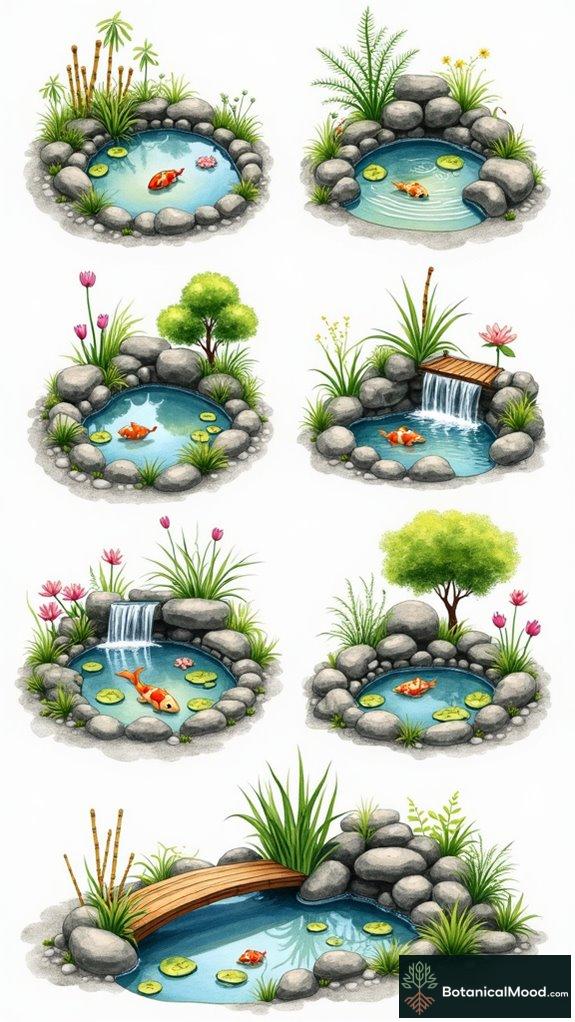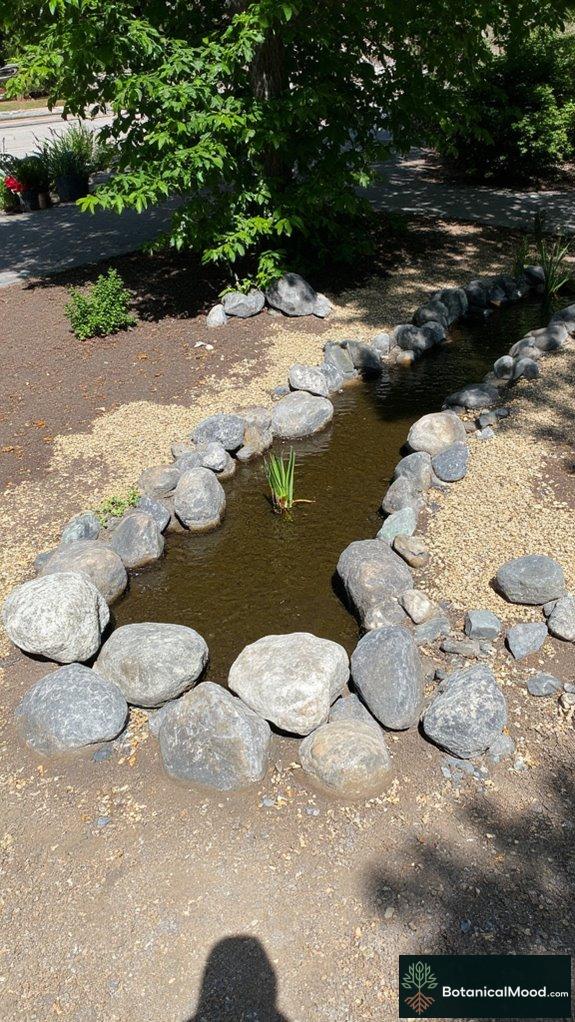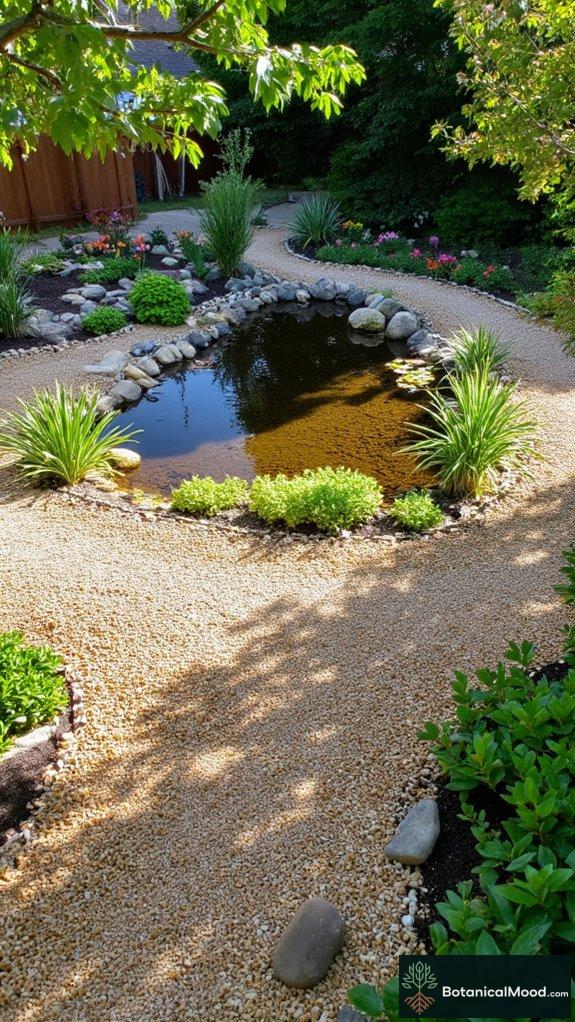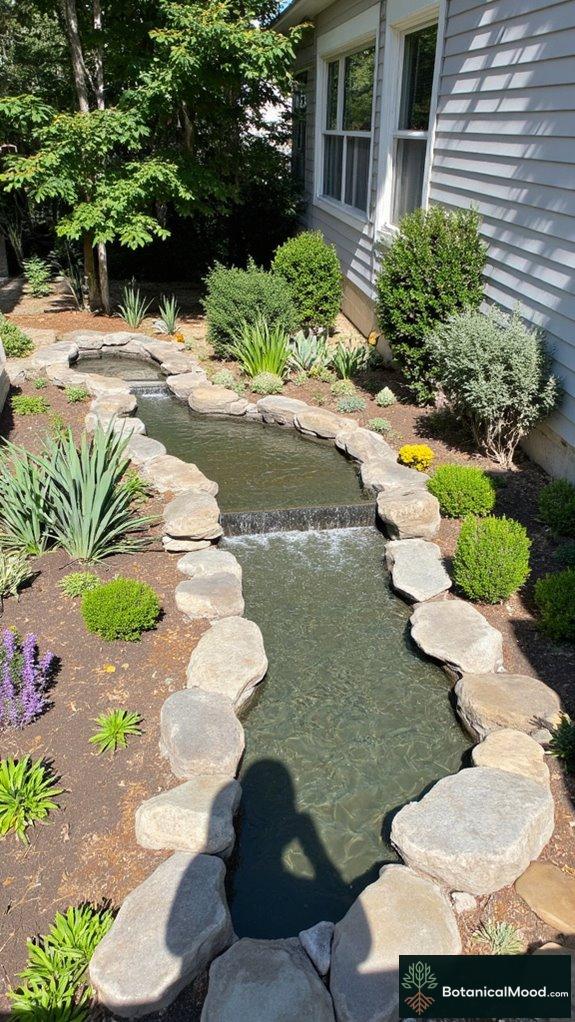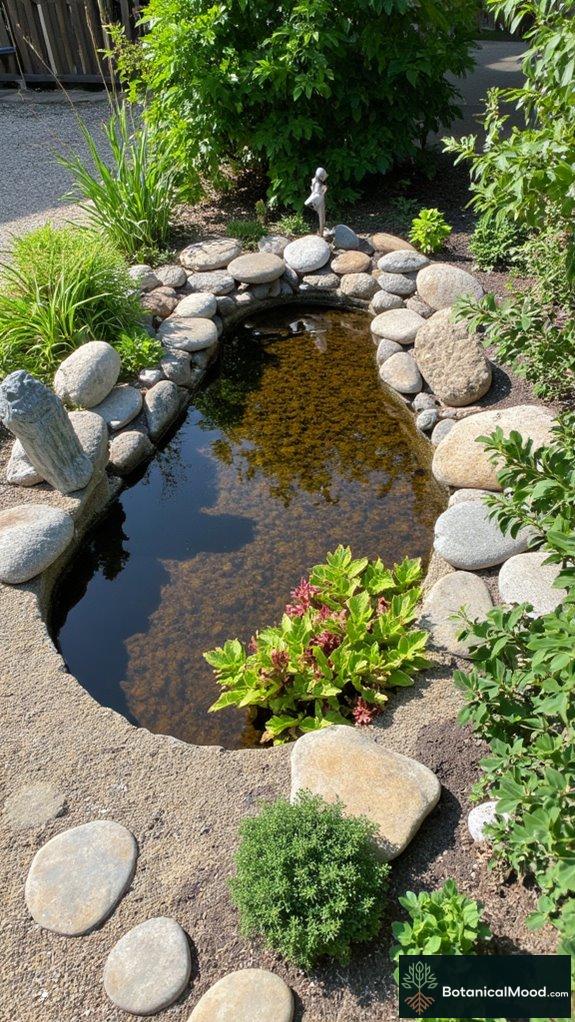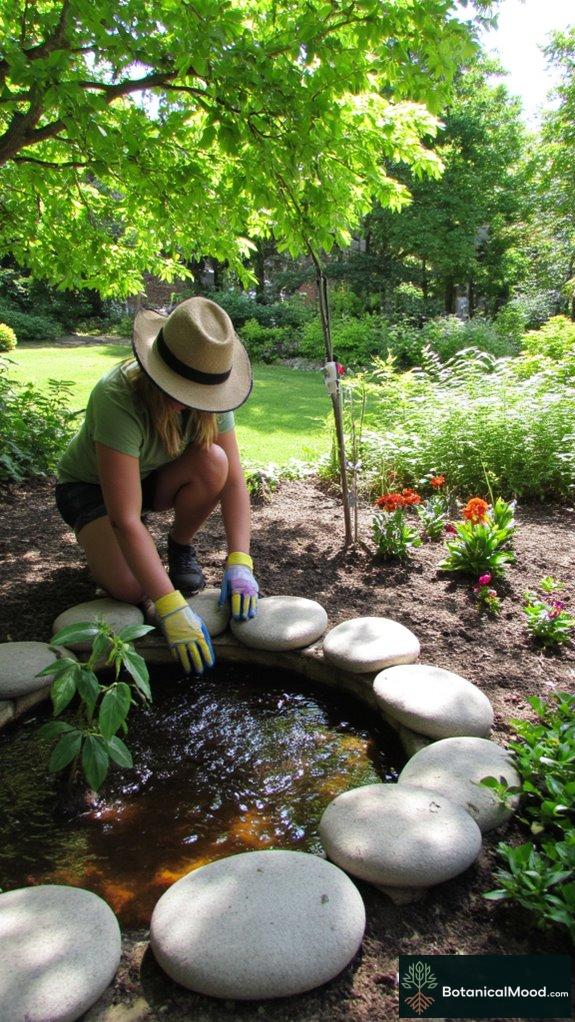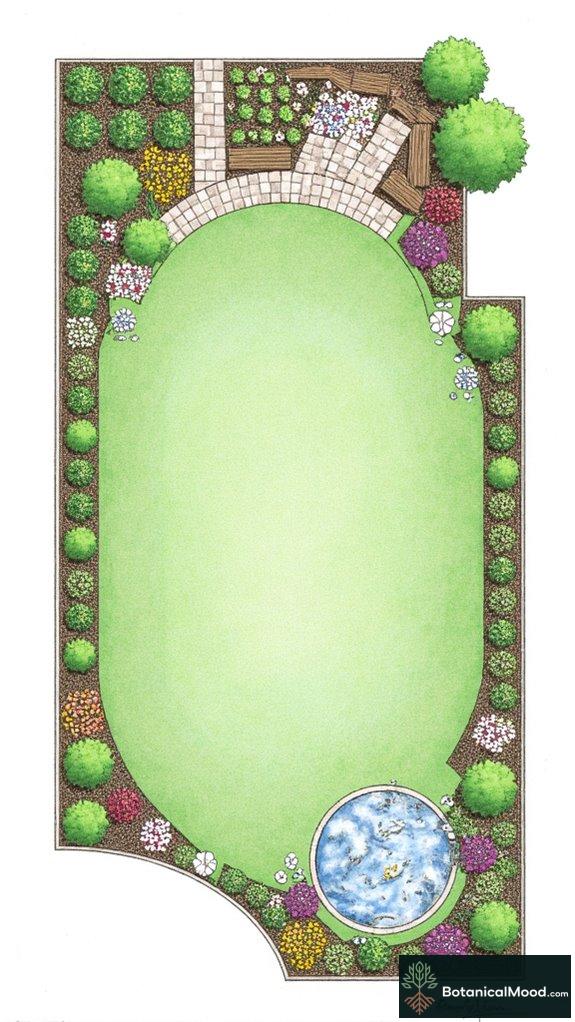If you’re like me, desperately trying to make a small garden border look like a masterpiece, let me share what’s worked (and what hasn’t).
First, there’s the Bearded Iris (Iris germanica)—a total show-off with its bold colors. And talk about low maintenance! I mean, I can barely keep a cactus alive, but this one flourishes without too much fuss.
Then there’s Liberty (Libertia chilensis). Beautiful arching leaves that scream of elegance—who doesn’t want that in a garden? Plus, it’s drought resistant. Because let’s face it, I forget to water things sometimes.
And for a vertical surprise, I added Honeysuckle (Lonicera japonica). Its fragrant blooms are like a party for the senses! Who said vertical space can’t be stunning?
Finally, I sprinkled in Erigeron karvinskianus. Talk about ground coverage! This little guy self-seeds, which feels like a gardening miracle. Can you believe it?
Let’s just say, my garden isn’t just flourishing; it’s becoming a dramatic story that unfolds with seasons. So, dive in and maybe you’ll find your new best friends too.
Designing the Perfect Small Garden Border: A Personal Journey
I remember the day I decided to tackle my tiny backyard. Armed with a spade and a box of hope, I realized I was not just shaping soil but crafting an environment. It began with colors—I was drawn to vibrant blooms of Bearded Iris and the elegant flow of Liberty.
As I dug, I pondered—what narrative should my garden tell? Each plant felt like a character with its own story. My Honeysuckle started as a mere vine but morphed into a fragrant curtain, inviting morning explorers.
And oh, the thrill of watching self-seeding Erigeron multiply! Nature’s little gift reminded me that gardens, like life, can surprise us—a reminder of the joys of planning and spontaneity. It’s not just about aesthetics; it’s about creating a haven.
Consider mixing textures and colors, and don’t shy from experimenting with local varieties, like the hardy Sedum or vibrant Calibrachoa, which thrive in small spaces. Your garden narrative awaits.
Quick Takeaways
- Choose vibrant flowering plants like Bearded Iris and Astilbe for striking visual appeal along borders.
- Incorporate low-maintenance groundcovers like Erigeron Karvinskianus and Sedum to enhance border aesthetics effortlessly.
- Opt for drought-tolerant options such as Liberty and Yarrow to maintain beauty with minimal water.
- Utilize climbing plants like Honeysuckle to maximize vertical space and add dimension to small garden borders.
- Group plants in odd numbers for a natural flow, and consider fastigiate shrubs for a tidy appearance.
Bearded Iris: A Colorful Addition

When I think about how just a few bearded irises can transform a small garden into a vibrant haven, I can’t help but get excited. Their bold colors—ranging from deep purples to vivid yellows—offer a feast for the eyes.
I’ve often explored various bearded iris varieties, each with unique charm and texture, like the ‘Batik’ with its striking patterns or the ‘Tennessee Waltz’ emitting a soft, romantic aura.
Focusing on bearded iris care is essential; they thrive in well-drained soil and require just a little maintenance. I’ve found that deadheading promotes growth and extends blooming, allowing their beauty to flourish. Additionally, incorporating layered tropical designs can enhance the visual appeal of your garden, creating a more dynamic landscape.
The emotional escape these irises provide makes my garden feel like a personal sanctuary, a space for liberation and reflection.
Liberty (Libertia Chilensis): Elegance in Small Spaces

Liberty (Libertia chilensis) stands as a striking choice for small gardens, especially since its graceful, arching foliage brings a sense of elegance to any tight space.
This resilient plant not only beautifies but also liberates your garden’s potential. Here are some notable Liberty features and small space benefits:
- Versatile Height: Reaches 2 feet, perfect for layering.
- Year-round Interest: Foliage maintains allure through seasons.
- Drought Tolerant: Thrives with minimal water, easing maintenance.
- Attractive Blooms: Offers vibrant white flowers in spring.
Incorporating Libertia into your garden enhances visual aesthetics while making the most of limited space. Additionally, its ability to contribute to an interactive sensory experience aligns well with the principles of sensory garden design for enhanced engagement with the environment.
Its dynamic presence inspires a sense of freedom, aligning perfectly with my desire to connect plants and design.
I hope you find Liberty as exquisite as I do!
Honeysuckle: Scented Climbing Beauty

Honeysuckle, with its enchanting aroma and vibrant blooms, captivates any gardener’s imagination, particularly in small gardens where vertical space is at a premium.
These fragrant blooms, often seen climbing over fences or trellises, allow us to embrace nature’s beauty even in tight quarters.
As I explore various climbing varieties, I find Lonicera japonica and Lonicera periclymenum especially alluring.
Their ability to cover vertical surfaces and attract pollinators fills my garden with a sense of life and vibrancy.
When pairing these climbers with robust supporting structures, I create a whimsical display that not only liberates the garden’s aesthetic but also invites fragrant breezes that refresh the spirit.
Additionally, incorporating native plants into my garden designs enhances their ecological value and provides essential resources for local pollinators.
Honeysuckle truly transforms small spaces into fragrant escapes.
Erigeron Karvinskianus: Charming Groundcover

As I wander through my compact garden, the soft, cascading blooms of Erigeron karvinskianus, commonly known as Mexican fleabane, stand out as an enchanting groundcover that effortlessly enhances the scenery’s charm.
Here are a few erigeron karvinskianus benefits I love:
- Low Maintenance: This resilient plant flourishes in various soil types with minimal care.
- Beautiful Blooms: Its delicate white and pink daisies bloom from spring to fall, creating a vibrant display.
- Drought Tolerant: Once established, it thrives in dry conditions, making it a sustainable choice.
- Self-Seeding: With clever self-seeding habits, it can fill gaps organically.
Incorporating low-maintenance native landscapes into your garden with Erigeron karvinskianus can further enhance its sustainability and beauty.
Engaging in proper erigeron karvinskianus maintenance creates an alluring tapestry, inviting tranquility and beauty into my outdoor space.
Daylily: Long-Lasting Floral Vibrance

With over 80 species and countless hybrids, daylilies (Hemerocallis spp.) bring an exquisite flair to any garden, especially for those of us managing smaller spaces. Their vibrant, long-lasting seasonal blooms create a stunning display, offering a sense of liberation and joy.
To guarantee peak growth, daylily care is straightforward—just provide well-drained soil, adequate sunlight, and regular watering. These resilient plants thrive in various conditions, making them perfect companions for other border plants like lavender or coreopsis.
As the blooms open consecutively, you’ll enjoy a continuous show of color throughout the growing season.
I’ve often found that by planting a mix of hybrids, I can create waves of enchanting hues, turning my modest garden into a vibrant oasis, reflecting my passion for garden design.
Ferns: Lush Greenery for Shaded Borders

Ferns embody the essence of lush greenery, transforming shaded borders into vibrant sanctuaries. With their delicate fronds and elegant forms, these shade-loving ferns bring life to any space yearning for tranquility.
Here’s why you should consider them:
- Diverse Varieties: From the delicate *Adiantum* to the robust *Dryopteris*, there’s a fern for every shaded corner.
- Moisture Retentive Soil: Ferns thrive in soil rich in organic matter, helping to retain moisture and support healthy growth.
- Layered Textures: Their varying leaf shapes create an enchanting tapestry, adding depth and interest.
- Low Maintenance: Once established, these resilient plants require minimal intervention, allowing you to embrace nature’s beauty effortlessly.
In my own garden, ferns have created soothing green enclaves, inviting peaceful contemplation amidst the bustle of life.
Astilbe: Textured Blooms in Partial Shade

Astilbe brings a stunning burst of color and texture to partial shade gardens, making it a favored choice for those looking to enhance their outdoor spaces.
With its feathery plumes reaching upwards in shades of pink, white, and red, astilbe color combinations can transform any garden border into a vibrant retreat.
For those embracing their gardening journey, astilbe maintenance tips are essential: guarantee consistent moisture and rich, well-drained soil.
Amending your soil with organic matter can boost their performance.
As I cultivate my own garden, I’ve come to appreciate astilbe’s unique ability to thrive in less sun, offering a rich tapestry of blooms throughout the season.
It’s a perfect plant for anyone seeking liberation through beautiful design.
Coral Bells (Heuchera): Vibrant Foliage Highlights

Coral Bells (Heuchera) serve as a striking addition to small gardens, offering more than just colorful blooms; their vibrant foliage makes them a standout choice for adding depth and texture to your outdoor areas.
Here’s why I love them:
- Variety of Foliage Color Choices: Coral bells come in shades ranging from deep burgundy to bright lime, allowing endless design possibilities.
- Versatile Growth Conditions: They thrive in both sun and partial shade, making them adaptable for various garden spots.
- Low Maintenance: Coral bells care is simple, needing just regular watering and occasional trimming.
- Unique Flower Stalks: Their delicate flower spikes create visual interest above the lush leaves.
Adding them to your surroundings can transform it into a vibrant, textured haven.
Sedum: Low-Maintenance Border Staple

When you’re looking to enhance the borders of your small garden, sedum (Sedum spp.) emerges as an exceptional option, not just due to its stunning array of shapes and colors, but also because it thrives on minimal care.
I revel in the variety of sedum options available, from the low-growing ‘Sedum acre’ to the silvery leaves of ‘Sedum album’.
These sedum varieties adapt effortlessly to different conditions, making them a perfect fit for uninhibited gardening.
Sedum care is a breeze, requiring well-draining soil and full sun exposure, allowing me to enjoy their vibrant presence without unnecessary fuss.
The way they spill over borders, exuding tranquility and charm, makes sedum an enduring choice in my pursuit of a liberating and beautiful scene.
Case Study: Colorful Border Plants

Colorful border plants can transform a modest garden into a vibrant paradise, drawing the eye and elevating the overall aesthetic.
With thoughtful design strategies, you can create a dynamic display right at your doorstep.
Consider these enchanting plant combinations:
- White Wedding® Hydrangeas – The structural elegance of their blooms anchors your border beautifully.
- Flirt™ Nandina – Year-round red accents against rich green add a seasonal flair.
- New Gold Lantana – Their colorful, pollinator-attracting blooms enrich multi-seasonal interest as they thrive in drought-prone conditions.
- Yarrow (Achillea millefolium) – Drought-resistant and vibrant, it brings texture and color depth.
Compact Border Plant Arrangements

In my compact border arrangements, I find grouping plants in odd numbers creates a natural flow that stands out without overwhelming.
By integrating fastigiate shrubs, I maximize vertical interest while maintaining a tidy appearance.
Furthermore, I prefer drought-tolerant, evergreen varieties for durability and minimal upkeep.
This thoughtful plant layering truly liberates the aesthetic, transforming small gardens into intimate havens of beauty and color.
Meet the Creative Gardener

Megan Thompson, a gardening enthusiast from Portland, Oregon, discovered her passion for gardening while nurturing a small backyard vegetable patch during the pandemic, igniting her desire for a thriving decorative garden.
To design her enchanting small garden, Megan meticulously planned each element by researching container gardening techniques and vertical planting methods. She opted for a cohesive color palette and incorporated layering strategies to maximize visual appeal and depth, drawing inspiration from local gardening workshops.
Megan utilized essential tools like Fiskars pruners and a DeWit hand trowel along with accessories from Garden Art Studio, such as decorative stakes and unique sculptures.
Collaborating with local horticulturist Lisa Chen, she guaranteed every plant choice complemented her garden’s structure and seasonal aesthetics.
Iconic Flowering Landscape Favorites
Creating a visually stunning garden isn’t just about choosing the right flowers; it also involves understanding how to blend textures, colors, and layers harmoniously.
Here are four iconic flowering scenery favorites that can elevate your borders:
- Butterfly Bush (‘Pugsy’ variety) – Blooms from early summer to frost, attracting vibrant butterflies.
- Phlox – Offers extended bloom time and low maintenance, perfect for colorful arrangements.
- Astilbe – Features plumelike flowers in multiple hues, adding textural contrast.
- Coral Bells (Heuchera) – Provides stunning foliage colors that enhance vibrant arrangements throughout the seasons.
Integrating these iconic blooms into your borders can create an enchanting tapestry, celebrating the beauty of nature while allowing you to express your gardening creativity liberally.
Garden Design FAQ
What Is the Best Time to Plant Border Plants?
The best time to plant border plants is either in the spring or fall.
I prefer spring planting, as warming soils encourage robust root growth, especially for perennials like Echinacea purpurea or Salvia nemorosa.
Alternatively, fall planting allows roots to establish before winter, benefiting hardy varieties.
Whichever season you choose, guarantee you’re mindful of local climate. Embracing
How Do I Maintain Healthy Soil for My Garden Borders?
To maintain healthy soil for my garden borders, I start with soil testing—it reveals essential nutrient levels.
Then, I apply compost, which enriches the soil structure, offering crucial organic matter. I prefer well-rotted compost, ideally from reputable brands like Black Gold.
Regularly, I turn in the compost, mixing it into the top layer, creating a vibrant foundation for my plants.
This nurturing process, fundamental to my garden’s success, reflects the beauty I seek in design.
Can I Mix Edible Plants With Decorative Ones in Borders?
Absolutely, you can mix edible plants with decorative ones in borders!
This edible integration not only enhances your garden’s aesthetic balance but also showcases your creativity. For instance, pairing vibrant Swiss chard (Beta vulgaris var. cicla) with delicate ornamental kale (Brassica oleracea) can create stunning visual harmony while providing fresh produce.
I’ve found that contrasting textures and colors, like the deep greens of herbs alongside brilliant blooms, elevate the overall design.
Enjoy the beauty and bounty!
How Do I Control Pests in Small Garden Borders?
To control pests in small garden borders, I rely on natural pest control methods.
I introduce beneficial insects like ladybugs and lacewings, which prey on aphids and other garden pests, promoting a balanced ecosystem.
I also plant companion species, such as marigolds (Tagetes spp.), to deter harmful insects naturally.
Regularly monitoring the plants helps me spot infestations early, ensuring that my borders remain vibrant and resilient, embodying the beauty of nature.
What Is the Average Lifespan of Perennial Border Plants?
Perennial varieties often grace our gardens for three to five years, though many long-lived choices can thrive even longer with the right care.
I’ve found that plants like *Helleborus orientalis* and *Sedum* species bring enduring beauty to borders, blooming year after year.
These resilient gems not only withstand the passage of time but also offer vibrant colors and textures, creating a sanctuary of tranquility for both the gardener and the garden itself.
Summary
My small garden border bursts with life using a Bearded Iris and Liberty (Libertia chilensis). The sweet scent of Honeysuckle intertwines with the hardy Erigeron karvinskianus below, creating a beautiful and cohesive space that truly reflects my love for gardening.
I’d love to hear about your experiences too! What plants do you enjoy in your garden borders?
Feel free to share pictures of your own garden and tell us how you designed it.
References
- https://www.gardenersworld.com/plants/best-plants-for-narrow-borders/
- https://www.veranda.com/outdoor-garden/g30914247/best-edging-plants/
- https://www.youtube.com/watch?v=_iS27kKVTvo
- https://savvygardening.com/low-maintenance-garden-border-ideas/
- https://www.realhomes.com/advice/garden-border-ideas
- https://www.thetutuguru.com.au/product-category/plant-types/borders/
- https://www.botanicalinterests.com/community/blog/low-perennials/
- https://southernlivingplants.com/plan-your-garden/create-a-show-stopping-edge-with-the-colorful-border-garden-plan/
- https://www.heyhoneysuckle.com/blog/13-dreamy-border-plant-ideas-for-a-relaxed-cottage-garden
- https://plantsbymail.com/products/colorful-border-garden-design
- https://www.youtube.com/watch?v=5jrz3ipHpPA
- https://www.finegardening.com/article/design-a-border-with-strong-plant-shapes
- https://www.rhs.org.uk/garden-design/how-to-plan-a-border
- https://www.youtube.com/watch?v=OprqEVWGTnA
- https://www.gardenary.com/blog/border-gardens-are-the-perfect-solution-to-small-garden-design
- https://www.youtube.com/watch?v=X144Po_sONc
- https://firsteditionsplants.com/resource/understanding-border-plantings/
- https://www.gardenersworld.com/how-to/maintain-the-garden/small-garden-design-ideas/
- https://themicrogardener.com/learn/design/
- https://www.chicagobotanic.org/plantinfo/tips/small_space_gardening
- https://www.stonegableblog.com/pop-color-gardening-200-00-giveaway/
- https://www.finegardening.com/article/small-space-gardening-make-the-most-of-a-small-space
- https://www.creativevegetablegardener.com/how-to-start-a-small-vegetable-garden/
- https://joegardener.com/podcast/small-space-vegetable-gardening-mark-ridsdill-smith/
- https://www.youtube.com/watch?v=k-usTmIGu1A
- https://www.gardendesign.com/shrubs/small-flowering.html
- https://www.americanmeadows.com/content/recommended-perennial-plants-for-small-space-gardens
- https://www.houzz.com/discussions/6104316/flowering-plants-for-full-sun-narrow-border

